



For more information
please contact:
James
Cohan
New York
Kukje Gallery
Seoul
Southern & Partners
London
Or, contact us.
|
|
BILL VIOLA 1951–2024

The unfolding of consciousness, the revelation of beauty, present even after death, the moment of awe, the space without words, the emptiness that builds mountains, the joy of loving, the sorrow of loss, the gift of leaving something behind for the next traveler.
– Bill Viola
JULY 13, 2024 — It is with great sadness that we share the news of the death of Bill Viola, one of the world’s leading contemporary artists. He passed away peacefully at home on July 12th, at the age of 73. The cause was Alzheimer’s Disease. Viola is survived by his wife and longtime creative collaborator, Kira Perov, executive director of Bill Viola Studio, sons Blake and Andrei Viola and daughter-in-law Aileen Milliman.
Viola was a pioneer in the fields of new media, video, and installation art. For over 50 years his visionary environments, defined by immersive video and soundscapes, focused on the fundamental human experiences of birth, death, and the unfolding of consciousness. By slowing down the images, Viola shifted viewers’ sense of perception and awareness to reveal the inner world.
Coming of age alongside the development of video, Viola experimented with the new technologies to explore the furthest reaches of the expressive possibilities of this new medium. He said, “I gradually realized that the act of perception was in fact a viable form of knowledge in and of itself, and not merely a kind of phenomenon. This meant that when I held the video camera and microphone, I was holding a philosophical system, not just some image and sound gathering tool." Viola’s discoveries assured that video was to become a vital form of contemporary art. His work has been influential to subsequent generations of artists and viewers. To have been in the presence of one of Viola’s installations was to be forever changed.
Born in 1951 in Queens, New York, Viola at age 9 was the captain of the TV squad at PS 20. He received a BFA in Experimental Studios from Syracuse University in 1973 where encounters with teacher and mentor Jack Nelson; fellow student David Ross, who would become the first video-art curator; artists Peter Campus and Nam June Paik – all of whom helped opened his eyes to new possibilities in art making. The composer David Tudor was a important influence, particularly the experience of performing in Tudor’s seminal Rainforest IV project. After graduation, Viola moved to Florence, Italy, where he worked at art/tapes/22, an early video art studio where he encountered Jannis Kounellis, Mario Merz, Vito Acconci and Joan Jonas. 1975 marked Viola’s first exhibition of a major installation work in Europe— Il Vapore at Zona, Florence, Italy. From 1976 to 1980, Viola worked at New York’s WNET Thirteen Television Laboratory as artist-in-residence. In 1976, at the Syracuse University student union, Viola creates He Weeps for You, an installation with a live camera magnifying an image within a drop of water, which was presented at Documenta 6 in 1977 and at MoMA, New York in 1979. During this time, he began his travels to remote locations, visiting the Solomon Islands and Indonesia to record traditional performances.
In 1977, Viola was invited to Melbourne, Australia by cultural arts director Kira Perov. The following year, Perov joined him in New York. They married and began a lifelong collaboration. Over the years, the pair travelled the globe experiencing the winter prairie landscape in Saskatchewan, Canada; the Sahara Desert in Tunisia; and rituals in Tibetan Buddhist Monasteries in the Himalayas all the while recording images that would feature in artworks throughout his career. During 1980/1 in Japan on a fellowship from Sony, the couple spent a year and a half studying Zen Buddhism and advanced video editing techniques. In 1981, Viola and Perov settled in Long Beach CA where their two sons Blake and Andrei Viola were born.
With an equal mastery of emergent technology and brilliant understanding of philosophical, mystical, spiritual and art historical traditions, Viola moved from one career milestone to the next. In 1985, Viola was invited to participate in the Whitney Biennial by curator John Hanhardt, cementing one of the key relationships of his career–Hanhardt, an early supporter of Viola’s work, had previously curated an exhibition of the artist’s videotapes in 1982. Hanhardt commissioned Theater of Memory, which was the first time-based, media work to be installed alongside paintings and sculpture at a biennial. During the very productive year of 1992, Viola produced 9 installations for an international list of institutions creating a series of works focusing on the themes of sleep, death, birth, and mortality.
Bill Viola’s work has reached a global audience through five decades of exhibitions. Viola represented the U.S. at the 46th Venice Biennale in 1995, premiering an ensemble of five new installation works titled Buried Secrets. In the last room of the US pavilion, one of Viola's most iconic works The Greeting was installed. Based on Mannerist painter Jacopo da Pontormo’s painting Visitation, this work opened the door to new expressive territory and pointed the direction to the narrative works to come. In 1997 the Whitney Museum of American Art organized Bill Viola: A 25-Year Survey, curated by David A. Ross and Peter Sellars, with Kira Perov; this was an exhibition of 16 installation works that travelled for two years to six museums in the US and Europe including LACMA, SFMOMA, Art Institute of Chicago, Stedelijk Museum, Museum für Moderne Kunst, Schirn Kunsthalle, and Karmeliterkloster, Frankfurt.
Viola never stopped pushing the technical limits of his practice. In 2002 his first work in high-definition video, Going Forth By Day, was commissioned by the Deutsche Guggenheim Berlin and Guggenheim Museum, New York. This five-part “fresco” represents the cycle of life, from birth to death with moments of joy and sorrow. This largest scale to-date installation provides viewers with a visual guide to themes of human existence: individuality, society, death and rebirth. The work was completed, almost presciently, just before the traumatic events in the United States on September 11th, 2001.
In 1998, Viola was invited as scholar-in-residence at the Getty Research Institute, Los Angeles, where the theme for that year was Representing the Passions. There, he made a study of devotional paintings depicting extreme emotional states in Medieval and Renaissance art; a theme that he develops in the coming years into the Passions series and an exhibition of the same title in 2003 at the J. Paul Getty Museum in Los Angeles that traveled to the National Gallery, London, the Fondación “La Caixa” in Madrid and the National Gallery of Australia, Canberra. Always moving toward self-knowledge, Viola sought deeper understandings of himself and by extension the human condition. Through his study of the history of art, he came to realize that art can express true compassion and he strove to make work that embodied the concept of transformation.
Viola’s work was the subject of a prodigious number of exhibitions around the world that were notable for their record-breaking crowds and for the long hours individual visitors spent with the works. In 2007, he presented Ocean without a Shore at the 52nd Venice Biennale. It was seen by over 60,000 viewers over the course of the presentation. In 2006, his exhibition “Hatsu-Yume (First Dream)” at Tokyo’s Mori Art Museum attracted over 340,000 visitors. In 2008 Bill Viola: Visioni interiori was the largest exhibition of Viola’s work in Italy (16 video installations), curated by Perov at the Palazzo delle Esposizioni in Rome. In 2017 Guggenheim Bilbao Museum presented a retrospective of works ranging from 1976 to 2014, the largest show to date, with the greatest attendance at 710,995 visitors. Recently, even during Covid restrictions, large solo exhibitions coordinated by Perov continued with “Bill Viola, Encounter” at the Busan Museum of Art, South Korea, “Bill Viola: The Journey of the Soul,” Pushkin Museum of Art, Moscow, both in 2021.
Viola’s experience of early of avant-garde music led to collaborations with the Ensemble Modern in Frankfurt in 1994, with the industrial rock band Nine Inch Nails in 2000, and in 2004 with director Peter Sellars and conductor Esa-Pekka Salonen on a new production of Richard Wagner’s Tristan und Isolde. The opera has toured internationally after premiers by the Los Angeles Philharmonic, the Opéra National de Paris, Bastille, and the Lincoln Center for the Performing Arts, New York.
Viola’s popularity stretched beyond the art world as his work found itself in unexpected places. Viola was commissioned for the 2004 Olympics in Greece for which he produced The Raft. In 2012 Viola and Perov went to El Mirage Dry Lake, Mojave Desert, California, to record Crossroads, an 82-foot wide installation for the Hamad International Airport, commissioned by the Qatar Museums Authority, Doha, Qatar. 2014 and 2016 mark the installations of two video commissions Martyrs (Earth, Air, Fire, Water) and Mary at St. Paul’s Cathedral, London, the first permanent installations of video art in a Church of England cathedral. Always interested in experimentation, Viola created a video game, completed in 2018, with Tracy Fullerton at USC Game Innovation Lab. The Night Journey game tells the story of an individual’s journey toward enlightenment.
Throughout his career, Viola was drawn to the work of the great masters; no one more so than Michelangelo. In 2010, Viola’s Emergence was installed alongside Michelangelo’s David in Florence. In 2017 Observance was installed as part of The Electronic Renaissance exhibition in Florence at the Duomo Museum alongside Michelangelo’s Pieta. In 2019 the Royal Academy mounted the exhibition Bill Viola/Michelangelo: Life, Death, Rebirth in which 14 drawings by Michelangelo from the Royal Art Collection were shown together with 12 of Viola’s video installations.
Throughout his career, Viola received numerous awards, including the MacArthur Foundation Fellowship (1989), the Skowhegan Medal (1993), XXI Catalonia International Prize (2009), the Praemium Imperiale from the Japan Art Association (2011), and made an Honorary Royal Academician (2017).

Viola on location for Room for St. John of the Cross, recording Sierra Nevada mountains near Lone Pine, Owens Valley, CA, April 1983
Photo by Kira Perov. Courtesy Bill Viola Studio and Southern & Partners. © Bill Viola Studio
CURRENT GROUP EXHIBITIONS
NORTH AMERICA

September 27, 2024–January 27, 2025
Information (1973), Electric Op
Buffalo AKG Art Museum, New York
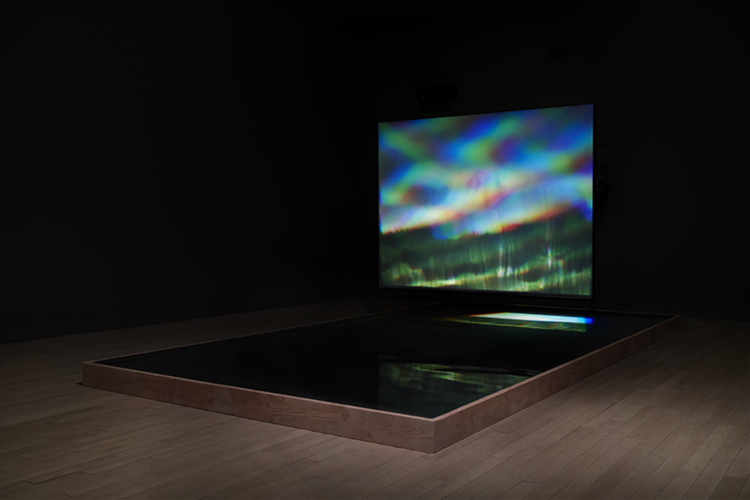
September 13, 2024–January 20, 2025
Moving Stillness: Mount Rainier 1979 (1979), Moving Stillness: Mount Rainier 1979
Asheville Art Museum, North Carolina

June 29–October 27, 2024
The Reflecting Pool (1977–9), 2024 Inaugural Exhibition
The Campus, Claverack, NY

March 25, 2022–July 26, 2026
The Quintet of the Silent (2000), The Clowes Pavilion Reimagined
Indianapolis Museum of Art at Newfields, Indiana, USA
EUROPE/UK

June 14, 2024–January 12, 2025
Installation photograph of Il Vapore (1975), with perfumer-designed eucalyptus scent
Mondes Sensibles : Une histoire sensorielle de l’œuvre d’art totale
International Museum of Perfumery, Grasse, France

May 10–November 2, 2024
Tristan’s Ascension (The Sound of a Mountain Under a Waterfall), 2005
Roma Amor, The Fall of Empires
De Renava - Biennale of Bonifacio, France
January 19–December 29, 2024
Self Portrait, Submerged (2013), Suppose You Are Not
Arter, Istanbul, Turkey
ONGOING
Self Portrait, Submerged (2013), Corridoio Vasariano, Le Gallerie degli Uffizi, Florence, Italy
The Night Journey (2007–2018), zkm_gameplay. the next level, ZKM | Center for Art and Media, Karlsruhe, Germany
Ocean Without a Shore (2007), Pennsylvania Academy of the Fine Arts (PAFA), Philadelphia, Pennsylvania
Ocean Without a Shore (2007), PLANTA - Sorigué, Balaguer (Lleida), Spain
The Silent Sea (2002), The State Hermitage Museum, Saint Petersburg, Russia
Tristan's Ascension (The Sound of a Mountain Under a Waterfall) (2005),
Man Searching for Immortality/Woman Searching for Eternity (2013), Stavanger Art Museum, Stavanger, Norway
Martyrs (Earth, Air, Fire, Water) (2014), and Mary (2016), Commissions for St Paul's Cathedral, London, UK
PAST EXHIBITIONS
|
NOW AVAILABLE
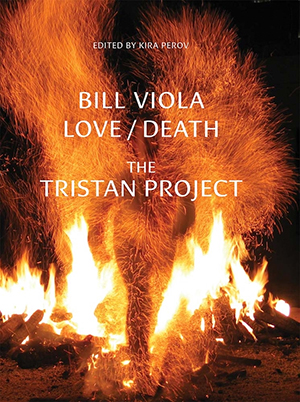
In 2004, the opera scene was taken by storm by the
ground-breaking production of Richard Wagner's opera
Tristan und Isolde in Los Angeles. This book offers a
behind-the-scenes look at how the visionary American
artist Bill Viola created four hours of video as a visual
complement to this profound psychological drama.
It also tells the story of its commissioning by the then
Paris Opera director Gerard Mortier, who pushed the
boundaries of what opera could be by inviting a trinity
of California-based creatives to re-imagine a
Tristan und Isolde for our times.
For more detailed information, view the book sheet.
Distributed for Mercatorfonds, available through Amazon,
Yale University Press, Barnes & Noble and other booksellers.
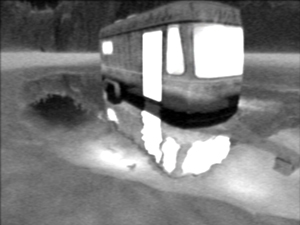
The Night Journey (2007–2018), is a collaboration
between Bill Viola and USC Game Innovation Lab,
including award winning game designers Tracy
Fullerton,Todd Furmanski and Kurosh ValaNejad
The Night Journey is one of the first experimental art
games ever made. It uses both game and video
techniques to tell the universal story of an individualís
journey toward enlightenment.
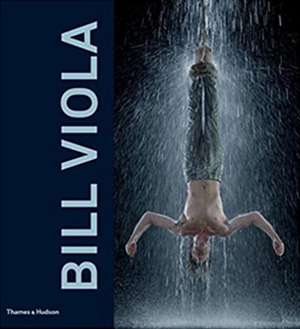
2014 monograph by John G. Hanhardt, ed. Kira Perov
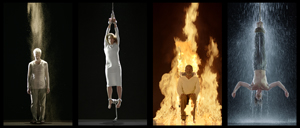
The Gerald Fox film, "Bill Viola: The Road to St Paul's"
Available on DVD through Arthaus Musik GmbH
|
![]()